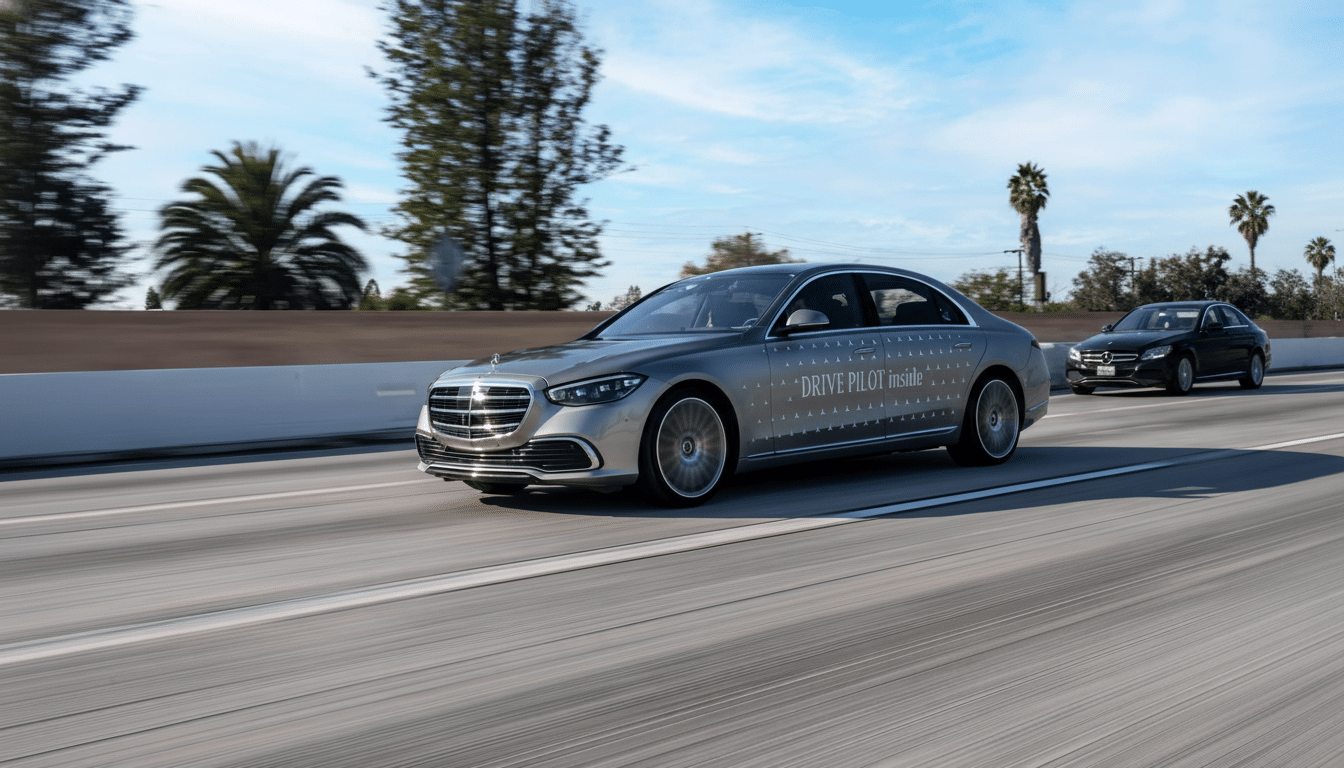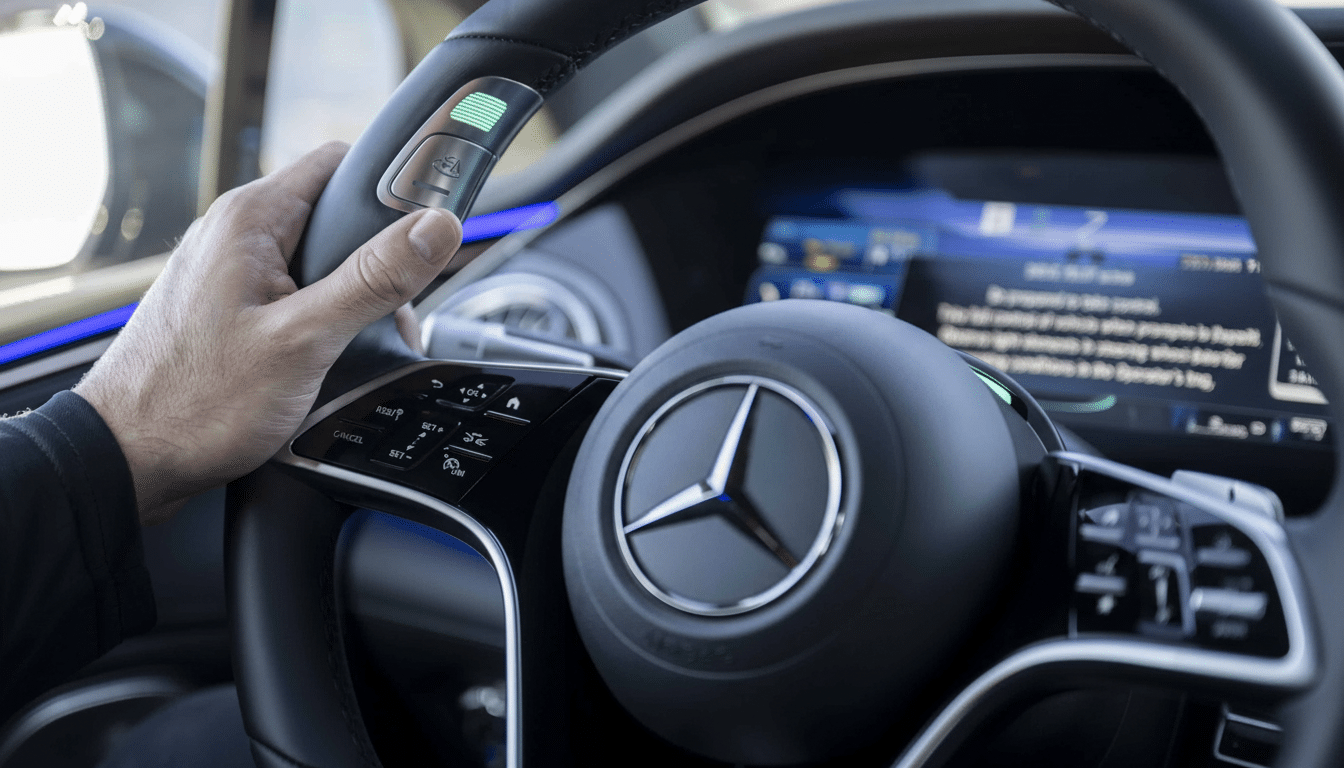General Motors is getting ready to introduce an automated driving feature that allows drivers to take their hands off the wheel and their eyes off the road on certain highways, including the flagship Cadillac Escalade IQ. The system expands upon the company’s long-standing Super Cruise program and features an upgraded sensor suite as well as software designed for true conditional automation on limited-access highways.
What Eyes-Off, Hands-Off Automated Driving Really Means
By industry parlance, an SAE International Level 3 automation—where the vehicle is doing the driving in a geographic or operational design domain (ODD) unless you’re required to take over—has “eyes off, hands off” characteristics. The bar is high. Mercedes-Benz is the only automaker to offer a commercially available Level 3 system in the United States at present, and its Drive Pilot is currently restricted to particular, mapped highways and low-speed driving in certain states.

GM’s planned system is aimed at a greater highway envelope. Company officials say it is designed to run on roads the company has not previously mapped, and to deal with unforeseen surprises—such as debris in the road or a car that slams on its brakes—without requiring a human to take control immediately. Even for off-ramps and boundary conditions, handovers still take place; however, there’s a desire to take at least some of the routine vigilance away from the driver in typical use cases.
Built On Super Cruise (With A New Brain)
Super Cruise, which was introduced in 2017 and is available on over twenty vehicle makes, spans about 600,000 miles of divided highways in North America. That program was a massive proving ground for GM’s driver monitoring, high-precision positioning, over-the-air updating, and customer education—four of the key pieces of any higher-automation product.
The eyes-off system introduces a multi-modal perception suite—lidar, radar, and cameras—along with more powerful onboard computing. Instead of relying so heavily on ultra-high-definition maps, GM outlines a perception-first approach that will combine sensor data in real time to create an as-it-stands view of the road and the things around you. This change is intended to increase robustness when lanes shift due to construction, signage is occluded, or weather degrades any one of the sensors.
The advantage is that GM has soaked up engineering talent and tooling in the process, which came from Cruise, its previous autonomous vehicle subsidiary. GM says it is pouring Cruise’s technology stack—that includes AI models trained on roughly five million driverless miles and a high-scale simulation framework—into development and validation. In practice, that means rare edge cases faced by robotaxis can be converted into repeatable virtual scenarios to harden the consumer system years before customers press the activation button.
Safety Case, Regulatory Oversight, and Performance Transparency
Regulation of Level 3 systems in the United States is a patchwork: state agencies manage on-road permissions, and federal regulators like the National Highway Traffic Safety Administration enforce defect reporting, performance investigations, and recalls. There’s no single system, so automakers need to create a documented safety case, define the operating domain explicitly, and log performance transparently once every member of the general public starts living with it.

Independent organizations have also set the bar high. NHTSA has also referred to the human driver in many cases, with recommendations including that acceptable use of an automatic feature needs to maintain reasonable levels of crash risk comparable to what would occur if a human were driving. The Insurance Institute for Highway Safety (IIHS) has called for strict controls on automated features: reliable mechanisms for monitoring whether drivers remain capable, robust interfaces between man and machine, and conservative system behavior when quality degrades. This is where our real challenge arrives: If we’re really going to take our eyes off the road, the car has got to get it right—spotting hazards, maintaining critical fallback strategies, and making clear (yet timely) requests for a takeover when necessary.
Competitive Offerings Landscape and Cost Dynamics for Level 3
The competition for consumer-facing conditional automation is getting tighter. Mercedes has a lead in some limited conditions, Stellantis previewed a Level 3 capability but pushed out deployment, and Tesla is continuing to work on camera-only supervised automation that still requires driver attention. Beyond the U.S., Honda and BMW have shown Level 3 in certain markets and conditions, evidence of how technological ambition is often gated by regulation and regional validation.
Hardware economics have been moving in GM’s favor. For the industry as a whole, lidar units, radar modules, and high-powered automotive compute have come down in price even as production volumes and quality controls climbed. GM’s scale of manufacturing could enable it to spread the cost of expensive components over multiple nameplates, bringing down per-vehicle costs and helping it learn faster from fleet data.
What to Look for as GM’s Eyes-Off Launch Window Nears
Look for a slow, staggered rollout that will include high-end trims, such as the Cadillac Escalade IQ, and explanations of precisely where on the highway (as well as which highways) will be supported at launch, how it handles weather conditions and speed envelopes, and what happens when you’re cruising around a car going slightly under the limit. The experience of transitioning—how the car asks to take control, how far in advance it gives notice, and what it does if the driver doesn’t respond—will indicate how sophisticated the design has become.
GM’s current Super Cruise fleet will be a valuable asset for the strategic arm. The real-world hundreds-of-thousands-of-miles of granularity can identify “long tail” events and feed into over-the-air refinements. If GM can show that the car works reliably along all the unmapped highways, handles emergencies without needing to fall back on a driver, and wins state approvals at scale, it will set a new standard for consumer-ready automation in North America.

